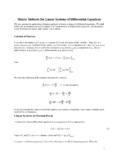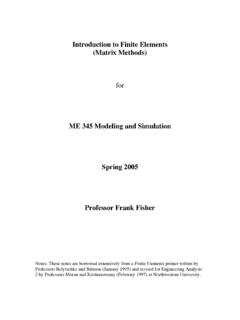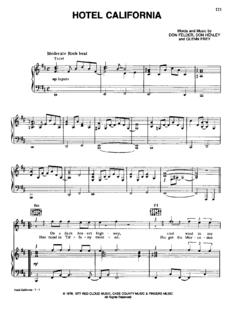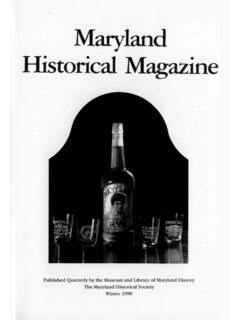Transcription of History of the Baltimore Hebrew Congregation v2
1 1 History of the Baltimore Hebrew Congregation Dr. Yitzchok Levine Department of Mathematical Sciences Stevens Institute of Technology Hoboken, NJ 07030 Note: Unless otherwise indicated all quotations are from A History of the Baltimore Hebrew Congregation : 1830 -1905 by Adolf Guttmacher, The Lord Baltimore Press, Baltimore , MD, 1905. I am indebted to Ms Sally Plumbaum, Assistant to the Executive Director of the Baltimore Hebrew Congregation , who provided me with a copy of this rare book. Introduction Not many Jews lived in Baltimore during the 18th century; by 1796 the entire Jewish population of the city consisted of about 15 families. As late as 1825 Solomon Etting, an early Jewish resident of Baltimore , estimated that the Jewish population of Baltimore to be about 150.
2 Given this, it is not surprising that the minyan that led to the organization of the Baltimore Hebrew Congregation was not established until the autumn of 1829. It first met in the home of Zalma Rehine (1757 1843), who had recently relocated to Baltimore from Richmond. On January 29, 1830 the Maryland House of Delegates passed an act incorporating the Congregation as an official entity within the city of Baltimore . The Hebrew name of the Congregation was Nidchei Yisroel, The Scattered of Israel. In its early years it was often referred to as the first Hebrew Congregation and later as the Stadt Shul. This latter designation was used to distinguish it from The Fell s Point Hebrew Friendship Congregation (later the Eden Congregation ), which was organized in 1838 by a number of co-religionists who had settled in what was then an outlying and, at first, [a] separate district, while the Mother Congregation was located in the center of town.
3 Nature of the Congregation The early membership was largely made up of Jews originally from Holland, many of whom had previously settled in the West Indies. There were commercial ties between Baltimore and the West Indies which explains the settlement of Dutch Jews from the West Indies in Baltimore . Beginning in 1835 a number of Bavarian Jews settled in Baltimore and soon outnumbered the Dutch Jews. In 1832 the roster of the Congregation contained the names of 29 heads of families; in 1835 there were 41 families, and in 1839 the membership had grown to 59. The Congregation was organized by orthodox Jews, and for many decades the services were carried on according to the old orthodox ritual. The people lived strictly orthodox 2[lives], observing the very minutiae of the Rabbinical Law.
4 The dietary laws were conscientiously carried out. The Sabbath and the Festivals were consecrated to worship and to rest, and the ceremonies connected with them were observed in every home. The Congregation , in those early days, was the center of all communal activity; it reflected, far more than today, the religious and social status of its members, for the Congregation entered into the life of everyone. It regulated the religious affairs of the community by appointing Shochtim, maintaining a Mikvah (Ritual bath), and looking after the baking of Matzoth. It is important to keep in mind that those who supported the Congregation were, with few exceptions, relatively poor. Most of them struggled to earn their livelihood. Still help was never refused to those who asked, and the members of the Congregation made sure that the poor were cared for in many ways.
5 The congregational minutes indicate that at almost every meeting the Board voted to give relief to some poor stranger or to someone who had grown poor in our midst. Twice a year the Congregation sent money to charities in the Holy Land that assisted the poor. Sources of Income In addition to the revenue from dues, the Congregation was funded through the selling of Aliyahs, the making of Mishebeirachs and Kale Molei Rachamim. Until 1847 the Aliyahs were sold before the Torah was taken out via bidding run by the sexton in a manner similar to what is still done in many synagogues on Yomim Tovim. Later the Board fixed the amount to be paid for Aliyahs. According to Maryland law, it was required to proclaim an upcoming marriage on three successive Shabbosim before the wedding.
6 The sexton proclaimed the marriage, and the Congregation charged for such proclamation from $ to $ The last recorded proclamation is dated May 28th, 1881. A curious system of fines existed in the synagogue and was in effect until 1893. For the purpose of fining, three kinds of tickets were used. A white ticket was sent through the sexton by the president, or one of the officers, to the offender as a warning. If this was not heeded, a blue or red ticket followed, the former being a fine of 25 cents, the latter of 50 cents. There were fines for talking during services; for chewing; for gathering on the pavement in front of the Synagogue; for bringing children under five years of age to services; for putting away the talith before services were over; for leaving the Synagogue during services without the permission of some officer; for singing L Dovid Boruch louder than the Chazan at the going out of the Sabbath.
7 The Congregation s Day School In 1840 Rabbi Abraham Rice, a Talmud Chocham and the first Orthodox rabbi to settle permanently in America, became the spiritual leader of the Congregation . He realized something that we take for granted today, namely, that the future of Judaism depended on 3children receiving a thorough Torah education. Sadly, opportunities for Jewish education in 1840 in Baltimore were minimal at best. (The same was true throughout America during the 18th and 19th centuries.) The proper education of Jewish youth was Rav Rice s first and major concern, and he set out to remedy the lack of Jewish education in Baltimore in what was then a bold and innovative manner. Therefore, Rabbi Rice established a Jewish all-day school that taught both Limudei Kodesh (religious subjects) and Limudei Chol (secular subjects).
8 In 1841 he opened a Hebrew day school under the auspices of the Baltimore Hebrew Congregation named the Hebrew and English Benevolent Academic Association of Baltimore . It was the first Jewish all-day school in America under the auspices of an Ashkenaz Congregation . The religious curriculum focused on Hebrew language and grammar, the Siddur, Tenach, Rashi, biblical History , and mitzvah observance, whereas in the afternoon English reading, writing and spelling, mathematics, and geography were taught. It is noteworthy that the selection of an English teacher was considered of such great moment as to be entrusted to a committee of American-born and educated Christians, who were supposed better to understand the needs of the future citizen.
9 Rabbi Rice realized that while most of his congregants spoke German, their off-spring were more likely to use English in their daily lives and hence should be able to read, write and speak English properly. Although originally only for boys, within a few years the school also admitted girls, since it was realized that they too needed a Jewish education. The school was fairly successful, and by 1851 it had an enrollment of about 200. Unfortunately, the establishment of free public school education led to a decline in enrollment and the school ceased to function in 1870. Parents at that time chose to send their children to public school rather than a Jewish religious school, not realizing that they were paving the way for their offspring to assimilate. While it functioned the school managed to educate a number of young people who remained observant Jews.
10 One such person was Dr. Aaron Friedenwald (1836 1902) who attended the school and remained an observant Jew throughout his life - something almost unheard of for a 19th physician. The Synagogue Grows The Baltimore Hebrew Congregation outgrew its quarters every few years. At first it occupied a room, corner of Bond and Fleet streets, over a grocery; then it moved in 1832 to North Exeter Street, near what is now Lexington Street. In 1835 the Congregation occupied an one-story dwelling on High street near the bend, between Fayette and Gay Streets. In 1837 the Congregation had grown sufficiently prosperous to buy a three-story brick dwelling, corner of Harrison Street and Etna Lane. However, within a few years this facility also became inadequate, and the membership erected the first synagogue building in Maryland.














